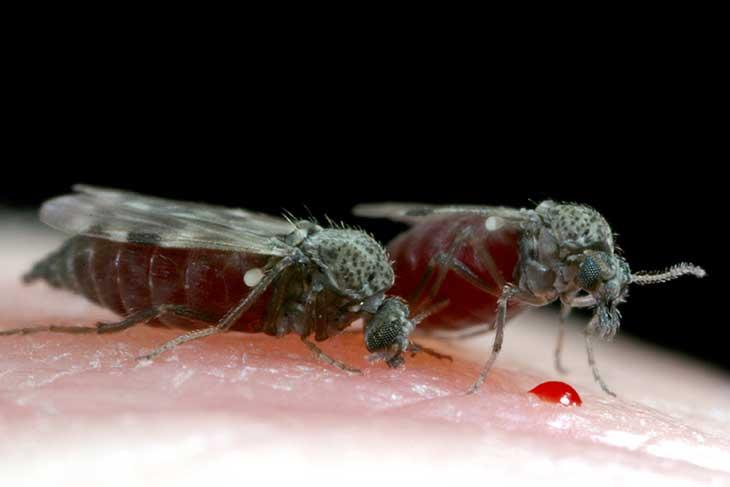The UK has learnt many lessons from the bluetongue virus outbreak of 2006, and supported by The Pirbright Institute, is better prepared than ever to prevent or control a possible new outbreak, Dr Simon Carpenter from the Institute has said.
Speaking at the 2016 World Buiatrics Congress in Dublin, Dr Carpenter, Head of Entomology at the Institute and a leading expert on bluetongue virus (BTV), said that since 2006 there had been a significant improvement in the UK’s ability to predict, detect and control the disease.
Bluetongue is caused by a virus transmitted by Culicoides biting midges, which are most active as adults between May and October. Bluetongue virus (BTV) can infect all ruminants; such as sheep, cattle, goats and deer, although sheep and cattle are the most susceptible to the disease. It can also affect camelids such as llama and alpaca.
In 2015/6 almost 200 farms and small holdings were affected by BTV in France and this constitutes a threat to the UK should the virus spread northwards. Midges can be transported long distances over open water, such as the English Channel, assisted by prevailing winds. The latest assessment by Defra and other experts including Dr Carpenter, is that the UK is at risk of an outbreak towards the end of the summer as a result of infected midges being blown across from France to the south east of England.
Dr Carpenter said: “Our work at The Pirbright institute has enabled us to develop predictive models to assess the probability of movement of infected midges from outbreak areas in France, and to demonstrate that our climate will not protect the UK from BTV transmission. As the re-emergence of BTV in France demonstrates however, it is still challenging to predict outbreaks of midge-borne viruses, which are still happening with high frequency in Europe”.
There are over 27 different serotypes (or strains) of BTV. Improving diagnostics is a key area of research for the Institute and it is home to the UK and European reference laboratory for bluetongue virus, which acts as a hub of expertise on BTV outbreaks that occur in the EU. The diagnostic tests the laboratory performs establish the serotype causing the outbreak.
Tests standardised by the Reference Laboratory are much quicker than conventional virus neutralisation tests; giving results within a day, rather than three weeks or so, as previously. This helps save animals’ lives and limits potentially significant losses to the UK economy; as quicker and more informed actions can be taken to limit the spread of the disease.
Dr Carpenter said: “Standardisation of rapid and reliable quality assured tests for BTV within the Institute’s Reference Laboratory has increased the number of samples we can process each day, and has also improved the reliability of such testing. Our virologists are also able to compare emerging strains with reference collections held at Pirbright to trace their origin using genome sequencing.
There is no treatment available for BTV, other than supportive therapy, but vaccination has been demonstrated to be safe and effective in reducing clinical impact and in some cases eradicating BTV; as it has done in the UK”.
Infection with one BTV serotype does not protect against infection with another, so identifying the serotype of BTV that is causing an outbreak is important. The Institute is playing a major role in helping control the virus through its vaccinology research and is currently working on novel vaccines which may provide protection against multiple BTV serotypes.
The Institute is a key partner supporting the national Joint Action against Bluetongue (JAB) campaign; with Institute experts such as Dr Carpenter speaking at regional roadshows to brief farmers and other key stakeholders about recognising and tackling the disease in case of a possible outbreak.
Further details about the JAB campaign, risk assessments and dates for the regional roadshows can be found on the NFU website. More information about bluetongue and the work of Dr Simon Carpenter and The Pirbright Institute can be found on the Institute’s website.
